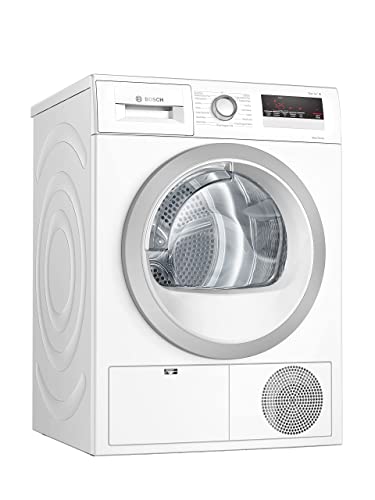Unexpected Business Strategies That Aided Heatpump Dryer Succeed

How to Properly Use a Heatpump Dryer
The dryers that use heat make use of electricity to move water from the fabric to the compressor. The moisture is then dehumidified and then heated up in the cycle creating a low-temperature drying process.
ENERGY STAR lists several 4-cubic-foot heat pump dryer models that are smaller than American standard sized dryers (which typically have seven cubic feet). The smaller sizes could be eligible for rebates and are more compact.
Energy Efficiency
A heatpump dryer is renowned for its energy efficiency. It makes use of air energy to dry clothes and does not create waste heat like conventional dryers. The heatpump dryers can save homeowners as much as $600 in energy costs over the life of the appliance. The use of renewable resources also makes them less environmentally damaging than traditional dryers.
The energy efficiency of a heater is determined by the COP (coefficient of performance) of the system which is the ratio of its cooling capacity versus power consumption. The higher the COP the more efficient the heatpump. This is why heatpump dryers have a much less kilowatts per hour than traditional dryers.
The low temperature of the heat pump dryer decreases the drying time as well as the energy consumption. This is due to the system's dehumidification capability is increased. Jia et al. (1993) examined the combination heat pump and microwave dryer using the thermosyphon loop for low temperature grain. They discovered that it consumed less than 2.1 J per kg of water taken away.
The use of heat pumps can be utilized in combination with other drying methods to increase energy efficiency. For instance atmospheric freezing can be combined with a heat pump to create a more efficient process than vacuum freezing, and to produce products that are similar to those made using vacuum freeze-drying (Bantle et al. 2009).
Many rebate programs offer incentives to purchase heatpump dryers, even though the initial investment may be higher. For example, the IRA's Energy Star program provides rebates to households that have reduced their whole-home energy usage by 35 percent or more. This helps to make the initial cost of a dryer with a heatpump affordable for families with small budgets.
A heatpump dryer can be an ideal choice for those seeking the most energy efficient option. It is estimated that a heatpump dryer can reduce energy consumption by over 40% compared to traditional dryers and is one of the most efficient methods to dry clothes at home.
Convenience
Although heat pump dryers are still fairly new to the United States, they're gaining popularity due to their energy efficiency and climate advantages. They're also more gentle on clothing because they dry at lower temperatures and moisture sensors ensure that they don't overheat. These features reduce shrinkage and damage, making them more cost effective than traditional electric dryers.
The most important feature that differentiates a heat pump dryer from other models is the closed-loop system they use to recycle air and store moisture during drying. Instead of heating and then dumping hot air and water into the environment through exhaust vents, they employ the compressor and refrigerant to continuously recycle the same air and collect excess moisture.
This process is similar in reverse to the process used in a refrigerator where the compressor heats the air and transfers it to a cold evaporator. The water vapor condenses in a pan. Then, the dry air is recirculated into the drum, while the excess moisture is sent to the drain pan. The hose for condensation drains to the sewer line in your home, eliminating the need for a vent to exhaust in the majority of cases.
The heat pump dryers cut down on the cost of electricity and are also quieter. Some models also come with sound-dampening technology to improve your comfort. They are also less maintenance-intensive than standard dryers. Since they don't require vents to function they're equipped with fewer parts and less risk of breaking. They don't require gas lines like vented dryers. This can be expensive to repair or replace.
The only drawback to convenience is that heat pump dryers tend to take longer to dry than traditional models. This is due to the fact that heat dryers operate at lower temperatures and may require multiple cycles to dry laundry. This can be compensated by reducing electricity consumption or by using energy-efficient modes.
heat pump tumble dryers , for instance, saves up to 60% of energy consumption and has a low sound level thanks to its vibration reduction system. It also features smart functionality like EcoDry or PerfectDry that assesses the calcium content of your water to ensure a consistent and safe drying. The dryer is WiFI compatible and can be controlled remotely via an app for smartphones.
Easy Installation
A heat pump dryer uses an air compressor to transfer heat from the air into the laundry. It can be put in any place and doesn't require a vent. This makes it a great option for small homes or accessory dwelling units (e.g., an apartment over the garage) and additions. It is possible to stack a heat-pump dryer and washer to save space.
This kind dryer has one major disadvantage that it takes longer than vented dryers to dry a load. However, it's less energy-intensive and doesn't create any smells. It also reduces the amount of laundry you need to wash and can help keep your clothes looking fresher for longer.
Most brands of heat pump dryers come in small sizes, which makes them a breeze to install in small and tight homes. If you're looking for a dryer that is more spacious, choose an energy star-certified heat pump with larger drums. Heat pump dryers can be equipped with an infrared heating element which accelerates the drying process.
The first step to installing a heat-pump dryer is to prepare your desired installation area. This includes clearing out any clutter and securing the space around the dryer to ensure proper ventilation. Next, locate and prepare the power outlet, making sure it is specifically for this appliance. Verify that the voltage and amps are identical to what is specified in the user manual. Connect the dryer to the power outlet and test it by running a test cycle. Clean the lint filters following each use. Check and clean the exhaust pipe regularly to prevent the clogging.
To get the most out of your heat-pump dryer Follow the instructions provided by the manufacturer for temperature and load size. This will allow your dryer's energy consumption to be reduced and it will operate more efficiently. To make sure that everything is running correctly, it's essential to schedule an annual maintenance appointment with a certified technician. They can also inspect your ductwork for any obstructions or damages which could be reducing the efficiency.
Maintenance
Heat pump dryers can be a valuable addition to your home when properly used. They do require regular check-ups, cleaning, and maintenance to keep them functioning optimally and efficiently throughout the year. These tips will help you prolong the life of your dryer, reduce energy usage and save money.

The condenser drain and lint filters should be kept free of obstructions. To avoid clogging and a decrease in performance, the lint filter should be cleaned after each use. You should also check regularly the vent hose to ensure it is free from blockages or kinks. A blocked vent can prolong drying times and create an fire risk. It is recommended to clean the vent hose with dryer lint removers or a vacuum attachment on a regular basis to ensure it is thoroughly cleaned.
It is also important to clean the heat exchanger regularly. The heat exchanger transfers heat from the air to clothes, and can become clogged with lint over time. This reduces efficiency and causes shorter cycles. You can use the dryer's manual for the user to get specific instructions on how to access and clean the heat exchanger. After cleaning the heat exchanger, be sure to wash and dry it thoroughly before installing it back into your dryer.
It is also important to ensure that the dryer is located in a well-ventilated location, away from walls or other obstructions. This will ensure that the dryer is properly ventilated and avoids overheating.
Finally, you should regularly clean the exterior of your dryer and drum. This will help to avoid stains and also keep the inside of the machine free of dirt dirt and grime. You can use a damp cloth or mild detergent to wipe down the surface of your dryer by avoiding harsh cleaners that could harm the finish.
In addition to these maintenance tips, it is recommended that you seek professional maintenance and servicing for your heat pump dryer at least once per year. A professional can inspect and clean the internal parts of your dryer, making sure they are in good condition.
